Cedar Waxwings are a favorite of many birders and backyard naturalists. With their fuzzy-looking crests and sharp color accents, they’re dapper looking birds. A large flock of them picking through berries is always entertaining to watch. I count myself a member of the Waxwing Fan Club.
But what’s in a name? Why is it called a waxwing?
That’s pretty simple: Cedar Waxwings really have wax wings. The bright red, visible on the wing feathers of some waxwings, is actually waxy red secretions.
What’s the purpose of the wax? That question seems more difficult to answer. Many ornithological sites state that the purpose remains unclear.
Dave Mehlman, director of The Nature Conservancy’s Migratory Bird Program, often fields questions about various bird species. The Migratory Bird Program works to identify networks of habitat needed by bird species throughout North America, Latin America and the Caribbean. Then, they develop plans and implement strategies to help conserve them at the local level.
Recently, Mehlman was asked about the purpose of those wax wings. He shared what he found with me:
The red wax tips are appendages on the bird’s secondary feathers. They’re colored by astaxanthin, a carotenoid pigment.
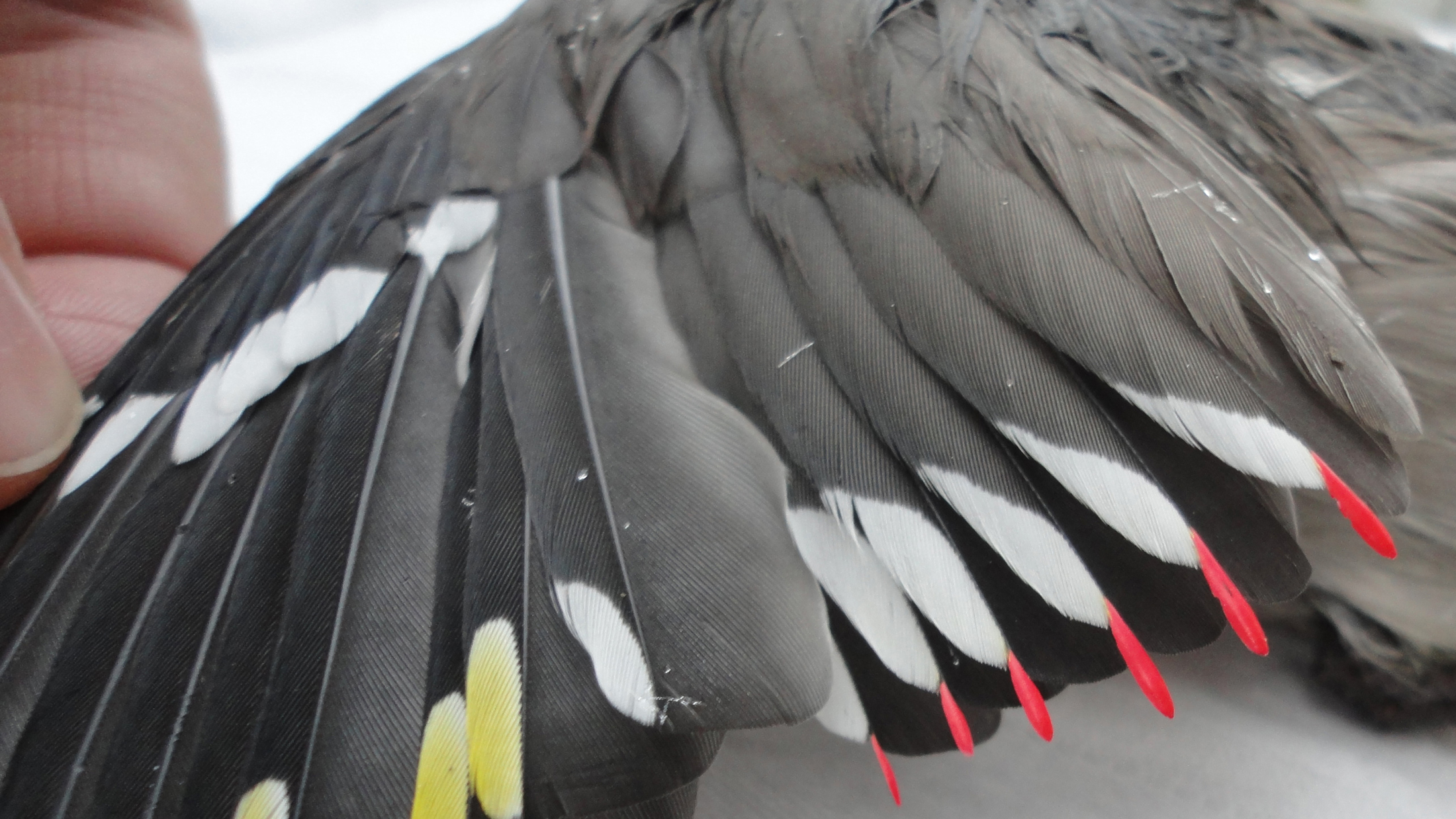
While it was originally thought that the red tips functioned to protect the feathers from wear and tear, there is little to no evidence for this hypothesis.
Rather, red secondary tips appear to be status signals that function in mate selection. Rare individuals have been noted with yellow waxy tips on secondary feathers.
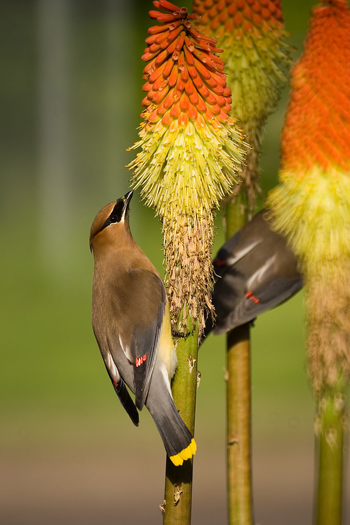
Interestingly, the red appendages of Cedar Waxwings increase in number and size with a bird’s age: individuals with zero to five waxy tips are presumable immature birds, while those with greater than nine are thought to be older.
Individuals within these two categories tend to associate as mates. Pairs of older birds (those with greater than nine waxy tips) nest earlier and raise more young than do immature birds, suggesting that this plumage characteristic is an important signal in mate choice and social organization.
Mehlman says this all suggests that waxwings evolved the red wax secretions as plumage enhancements to signal their age, maturity and social status among waxwings. This is a useful signal in a species that often is found in large flocks.
There is another interesting color phenomenon among Cedar Waxwings. These birds also have a striking yellow tail tip, but in some parts of their range some birds began appearing with orange tail tips in the 1960s.
According to the Cornell Lab of Ornithology:
The orange color is the result of a red pigment picked up from the berries of an introduced species of honeysuckle. If a waxwing eats enough of the berries while it is growing a tail feather, the tip of the feather will be orange.
And about those berries: Cedar Waxwings specialize in eating fruit, an interesting adaptation among North American birds. While we think of many birds as dining on berries, in reality berries are only ever a portion of their diets. Cedar Waxwings can exist solely on berries for months.
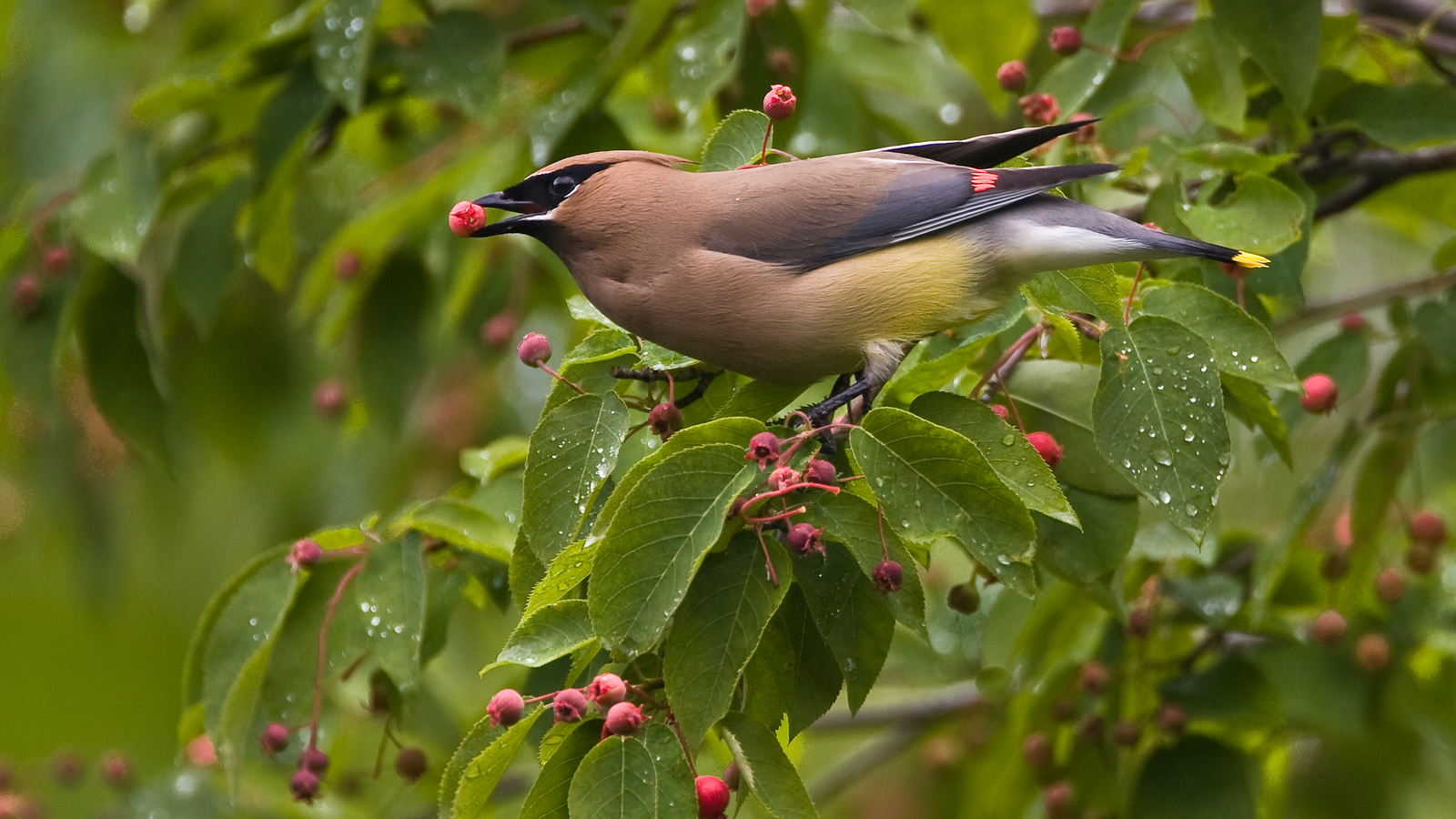
In fact, when that well-known nest parasite the Brown-headed Cowbird lays its egg in a Cedar Waxwing nest, the young cowbird has difficulty surviving. The high fruit diet is not conducive to a young cowbird’s growth and prosperity.
Sometimes, Cedar Waxwings eat berries that have fermented on the vine, leading to inebriated behavior from the birds.
Come summer, waxwings are often seen hunting insects. In fact, when I’m fly fishing a heavy mayfly hatch, I’ll often see them snatching the small insects as they hover over the water.
Even our common backyard birds are full of surprises. Enjoy their antics, and remember that your observations can often contribute to bird research and conservation.
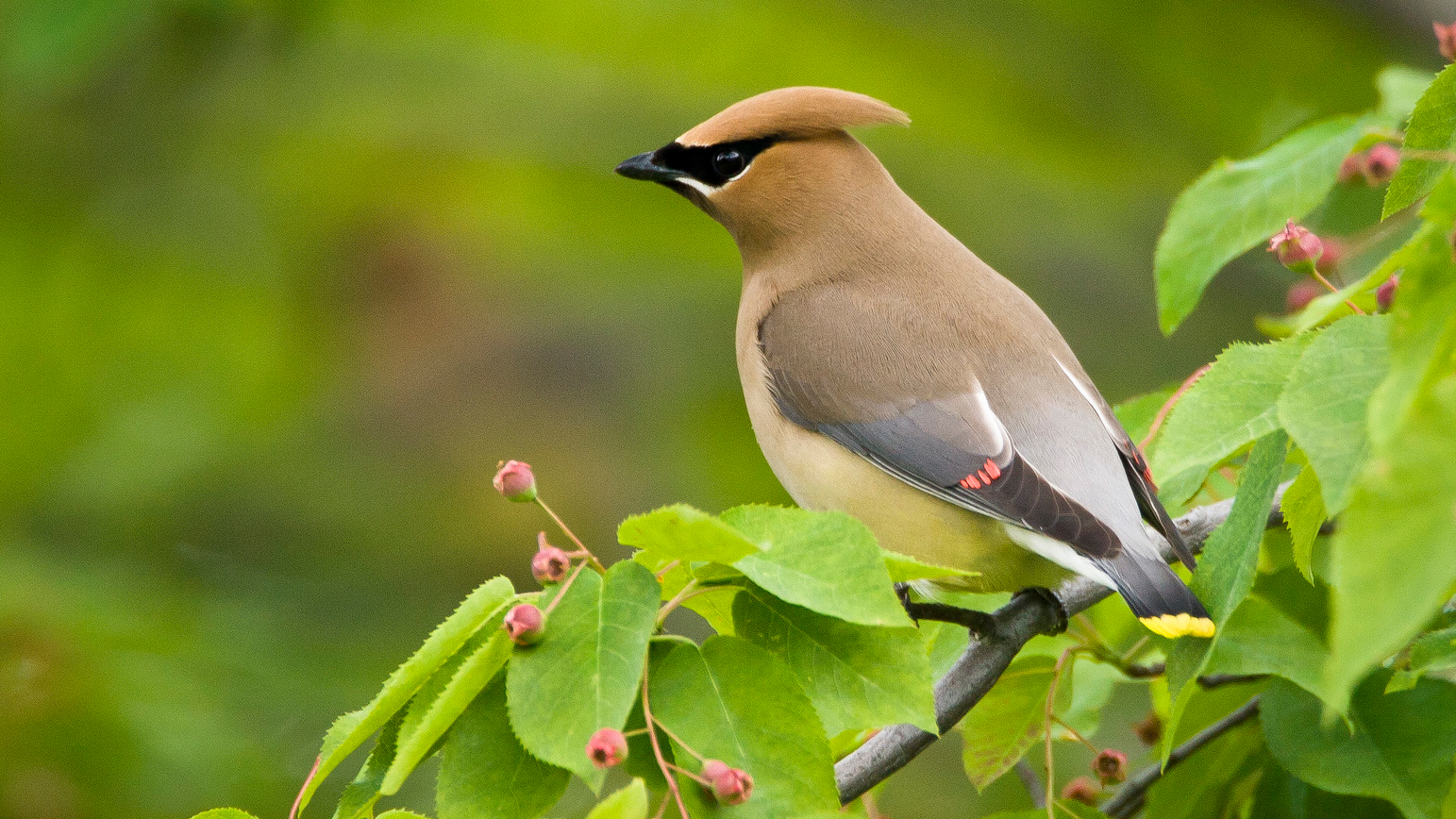
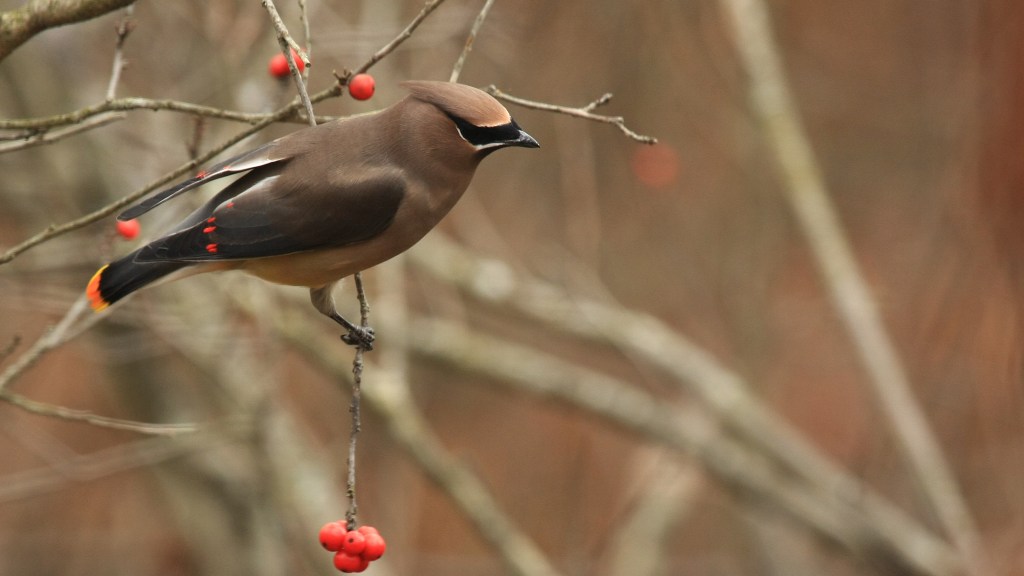



If waxwings hawk insects in summer, presumably during reproductive season, why wouldn’t ‘brood parasite’ cowbirds survive on insects and berries? Phainopeplas, etc add insects to their berry diet while feeding young, and they may also be the victims of cowbird parasitism, no?
The Cedar Waxwings visit our yard in northern Illinois every fall to eat the wild elderberries. The flock arrives to perch in the sixty foot+ poplar trees and then come down to feast on the berries. Though other birds are in the flock, they don’t eat the elderberries
Extremely enlightening. thank you! Such gorgeous creatures! I love their vivid colors. “Dapper” is a very apt description of these birds.
I have often seen Cedar Waxwings when they migrate in the spring, although I have yet to see any this year. They especially like the fruit of the Mountain Ash tree. Since the berries have been on the tree all winter, in the spring they are often fermented. As a result, the birds become inebriated and I have seen them topple over when they gorge on the berries.
Cedar Waxwing bird was the first bird I saw through a spotting scope in a neighbor’s tree. I had no idea
that it had a yellow – tipped tale or red wing tips. I saw both through my Kiowa spotting scope which was a great thing to see. I had a greater appreciation for spotting scopes after that first great discovery.
That was 25 years ago and I’m still birdwatching.
Rebecca L.
So enjoyed watching them catching insects over the river in north central Idaho.
I had a flock visit my mulberry tree in Shreveport LA one year. They stayed about a week and were eating the fruit all day, rain and shine. There were so many they filled the tree. I had two metal trash cans under that tree and there were so many bird droppings, it sounded like it was raining. I never saw any in that tree again. They were mesmerizing.
I too am a huge fan of cedar waxwings. I never really saw them in my yard in Washington, DC until I planted 3 allegheny serviceberry trees and now we are graced with a flock coming in to eat the berries every year. The native serviceberry is such a beautiful multi-stemmed understory tree with gorgeous white blossoms in the Spring and great reds and oranges when the leaves turn in the autumn.
Beautiful Bird! I never saw one on Long Island, they look like they would be in the same family as the Cardinal? I hope with the direction this country is going away from protecting the environment that they survive for future generations to observe…
Here in my neighborhood of north Idaho, I have enjoyed mainly hearing the high shrilling sounds from flocks of waxwings that frequent the area through the winter as we have many mountain ash trees in the area.
Thanks you for sharing this information.
Pat Bentley
Hayden, Idaho
I love this article…and love those Cedar Waxwings. What kind of berries do they eat? I’d like to plant some of these bushes or trees on my property. I live on the Connecticut River and see them eating wild berries, but we’re about 25 ft. up and can’t see them well.
Thank you.
/fascinating. I learn something new every day.
Matt – Love the Waxwing and yes they can get high on berries. Great the work you do.
Jen’s Aunt Leona
Article does not indicate range of the cedar waxwing. Please tell us.
Thank you! https://www.allaboutbirds.org/guide/Cedar_Waxwing/id
What is the range of the waxwing? I love in west Iowa
Thank you for the question! Cornell’s All About Birds page is a great place to find range maps for North American birds: https://www.allaboutbirds.org/guide/Cedar_Waxwing/id